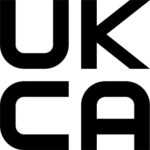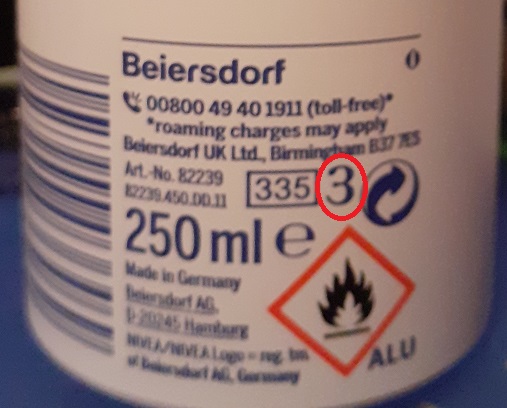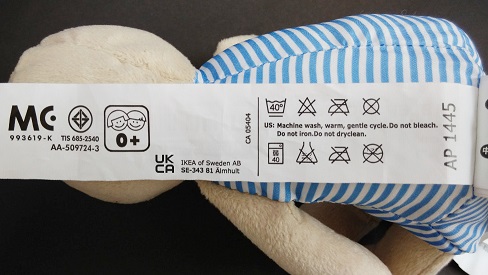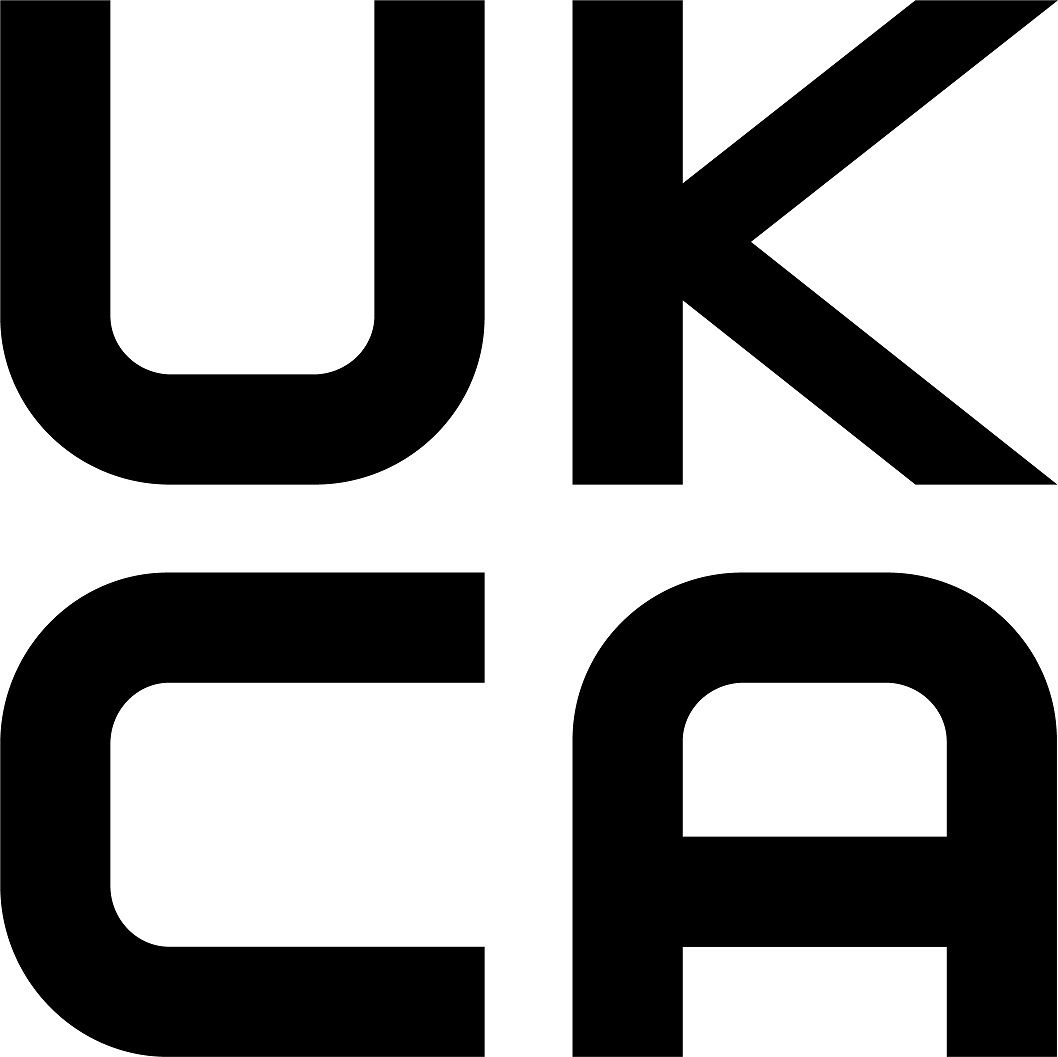UPDATED: The government has made it simpler for businesses to comply with the new UKCA testing and labelling rules that will come into effect on January 1, 2023.
The UK Conformity Assessed (UKCA) mark is due to replace the European Union’s CE markings on products sold in England, Wales and Scotland.
The changes include allowing products assessed this year under EU standards to be sold on the market in Great Britain in 2023 without the need for retesting. Instead manufacturers will simply be able to add the UKCA mark.
The UKCA certificate, whose introduction has already been delayed by a year, is a British equivalent of the EU’s widely-used and internationally recognised CE safety mark.
However, industry groups, while welcoming the concession, warned that the government’s decision to press ahead with the certification scheme would still pile costs on to business for no obvious benefit.
What is the UKCA mark?
The UK Conformity Assessed (UKCA) mark, pictured left, is a marking for products on the market in Great Britain (England, Scotland and Wales). Businesses have until 1 January 2023 to start using UKCA marking which replaces the CE and reverse epsilon markings now that we have left the European Union.
What’s changed with the UKCA mark?
To make it simpler for businesses to adopt UKCA marking, the government has brought forward the following measures:
Reducing re-testing costs
Any conformity assessment activities undertaken by EU bodies before the end of 2022 will be considered as the basis for UKCA marking next year. Legislation on this will be brought forward before the end of the year and will enable manufacturers to apply the UKCA mark on these products without the need for re-testing.
Removing the need to re-test existing imported stock
This will allow CE marked products that are manufactured and imported into the UK by the end of 2022 to be sold, without the need to meet UKCA requirements. This will remove the current need for retesting and recertification for products that are imported whilst the UK recognised CE requirements.
Continuing to accept spare parts onto the GB market
The UK will continue to accept spares onto the GB market that comply with the same requirements that were in place at the time the original products or systems they were being used to repair, replace or maintain were placed on the market. This will help to address concerns about the availability of spare parts and ensure businesses and organisations avoid disruption to their operations.
Extending labelling measures
To make it cheaper and logistically easier for businesses to continue to supply goods to Great Britain, legislation will be brought forward to extend current labelling easements to allow important information and other UKCA markings to be added to products using a sticky label or an accompanying document.
Recognising historic testing on some construction products
Manufacturers of construction products under AVCP system 3 – such as radiators, sealants and tile adhesives – whose products are tested by an EU notified body before 1 January 2023 – will be able to obtain a UKCA mark without having to retest through a UK-approved body.
Affected business sectors
The business sectors that these easement measures apply to include:
- aerosols
- electrical and electronics
- equipment for explosive atmospheres
- pyrotechnics
- gas appliances
- lifts
- machinery
- outdoor equipment
- personal protective equipment
- toys
- pressure equipment
- civil explosives
- recreational craft
William Bain, head of trade policy at the British Chambers of Commerce, welcomed the reforms. “It’s good news that the UK government has listened to business in providing these new easements to support cashflow and costs in these difficult economic times, he told The Times. “There will be relief on the pragmatic solution reached on spare parts and repairs.”
However, he added that from 2023 companies face “significant new cost pressures” from the new quality assurance system. “Uncertainties also still exist in terms of what will happen to markings in Northern Ireland,” he said.

Do I need to use the UKCA marking?
If you’re selling goods within Great Britain – and they previously needed the CE mark – then yes. As well as goods that have previously needed the CE mark, it’s needed on aerosols which previously needed a “reverse epsilon’ marking, as shown below.

The UKCA came into effect on January 1 2021 once the Brexit transition period ended. However, an adjustment grace period has been allowed so you can still use the CE mark until 1 January 1 2023 while you make adjustments. You should be looking to change to the UKCA mark as soon as possible though.
You only need to use the UKCA before January 1 2022 if all of the following apply:
- Your product is for the market in Great Britain
- It’s covered by legislation which requires the UKCA marking
- It needs third-party conformity assessment
- The conformity assessment has been carried out by a UK conformity assessment body
The product areas listed below are covered by the UKCA marking:
- Toy safety
- Recreational craft and personal watercraft
- Simple pressure vessels
- Electromagnetic compatibility
- Non-automatic weighing instruments
- Measuring instruments
- Lifts
- ATEX
- Radio equipment
- Pressure equipment
- Personal protective equipment
- Gas appliances
- Machinery
- Equipment for use outdoors
- Ecodesign
- Aerosols
- Low voltage electrical equipment
- Restriction of hazardous substances
These products are covered by the UKCA marking but have some special rules:
What rules do I need to follow?
The CE marking is only valid in Great Britain for areas where UKCA and CE rules stay as they are now. If the EU changes its rules on CE for member states and you CE mark your product, you might not be able to sell it in Great Britain, even if it was before December 31 2021.
The technical requirements and the conformity processes and standards you must meet for UKCA are mostly similar to CE standards. This includes the self-declaration of conformity.
Legislative areas where self-declaration of conformity for UKCA marking is permitted are in the table below.
| Legislation | Scope of products which can be self-declared |
|---|---|
| Electromagnetic Compatibility Regulations 2016 | All products |
| Toy (Safety) Regulations 2011 | Products where all essential requirements are covered by designated standards and the manufacturer has applied these standards |
| The Restriction of the Use of Certain Hazardous Substances in Electrical and Electronic Equipment Regulations 2012 | All products |
| Medical Devices Regulations 2002 | Some Class I devices |
| Radio Equipment Regulations 2017 | Products where all essential requirements are covered by designated standards and the manufacturer has applied these standards |
| The Pressure Equipment (Safety) Regulations 2016 | Category I pressure equipment |
| Construction Products Regulations (Regulation (EU) 305/2011 as brought into UK law and amended) | Products within scope of System 4 |
| Recreational Craft Regulations 2017 | Certain categories of recreational craft as specified in the legislation |
| The Electrical Equipment (Safety) Regulations 2016 | All products |
| The Supply of Machinery (Safety) Regulations 2008 | Products where all essential requirements are covered by designated standards and the manufacturer has applied these standards |
| The Equipment and Protective Systems Intended for Use in Potentially Explosive Atmospheres Regulations 2016 | Equipment-group II, equipment category 3 |
| Personal Protective Equipment Regulations (Regulation (EU) 2016/425 as brought into UK law and amended) | Category I personal protective equipment |
For many of the product types listed above, some transitional measures apply. Until January 1 2023, for most goods (except those subject to special rules), you can affix the UKCA marking on a label which is affixed to the product or on an accompanying document. It’s up to economic operators (manufacturers, importers or distributors) to ensure that the UKCA marking remains in place.
Construction products, medical devices, interoperability of the rail system and transportable pressure equipment are under UKCA but these transitional measures don’t apply.
If you want to change the size of the letters in the UKCA image to fit your product or packaging, then they must remain in proportion to the image displayed on the government website. They must be at least 5mm in height, unless stated otherwise by relevant legislation. It must also be permanently visible. From January 1 2023, it must be permanently attached.
Where do I put the UKCA marking?
In most cases, you’ll need to apply the marking to the product itself or to the packaging. In other cases, it can be placed in the manual or on other supporting literature. This will vary depending on the product.
Here is a mock-up of what an IKEA toy would look like with the new marking:

UKCA markings need to be placed on a product by either you as the manufacturer or by a licensed authority (the latter is only allowed in line with relevant legislation).
When attaching a UKCA marking, you take full responsibility for your product’s conformity in line with the relevant legislation. You must not place any marking or sign that would misconstrue the meaning or form of the UKCA to third parties, nor should you attach anything which obscures the UKCA marking.
What technical documentation do I need?
Record keeping
You (or the relevant authority) must keep a record to demonstrate that your product complies with regulations. It must be kept for up to ten years after the product goes to market. This information can be requested at any time by market surveillance or enforcement authorities to check your product conforms with the compliance.
Again, the documentation you need to keep depends on the legislation relevant to your product. But you must keep general records of how the products are designed and manufactured; how the product has been shown to conform to relevant requirements; and the address of the manufacturer and any storage facilities. Keep this information in the form of a technical file which can be presented if requested by the market surveillance authority.
UK Declaration of Conformity
The information required on the Declaration of Conformity is largely the same as what was required on an EU Declaration of Conformity. This can vary depending on the application legislation but generally should include:
- Your name and full business address or that of your authorised representative
- The product’s serial number, model or type identification
- A statement, stating you take full responsibility for the product’s compliance
- The details of the approved body which carried out the conformity assessment procedure (if applicable)
- The relevant legislation with which the product complies
- Your name and signature
- The date the declaration was issued
- Supplementary information (if applicable)
You will need to list:
- Relevant UK legislation (rather than EU legislation)
- UK designated standards rather than standards cited in the Official Journal of the European Union
Can I have a UKCA and a CE marking on the same product?
If your product is sold in Great Britain and the EU, you can have both markings.
UKNI is being used alongside CE for products on the market in Northern Ireland. Read more about the use of UKNI marking on the government website.
Where can I get additional advice?
Further questions can be sent to goodsregulation@beis.gov.uk.





